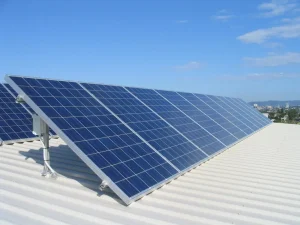How to Save Electricity in Your Office

As a business owner or manager, one of your top priorities is to cut costs and maximize profits. One area where you can achieve significant savings is in your energy usage. By implementing energy-saving measures, you can reduce your office’s electricity consumption, lower your energy bills, and contribute to a more sustainable future.
In this article, we will explore some effective ways to save electricity in your office and create a more energy-efficient workplace.
Conduct an Energy Audit
The first step in reducing your office’s electricity consumption is to conduct an energy audit. This process involves identifying areas of high energy usage and assessing the efficiency of your office’s systems and equipment. Here are some tips on how to conduct an energy audit:
Hire a Professional

One option is to hire a professional energy auditor to assess your office’s energy usage. They can use specialized equipment to measure energy consumption and identify areas where energy-saving measures can be implemented.
Perform a DIY Audit
Alternatively, you can perform a DIY energy audit. This involves a visual inspection of your office’s energy systems and equipment and tracking energy consumption over time. Here are some areas to focus on:
Lighting
Lighting is a significant contributor to your office’s energy usage. Check for the following:
- Are there any areas where lighting can be reduced or turned off?
- Are there any areas where natural light can be used instead of artificial light?
- Can you switch to energy-efficient LED bulbs or install motion sensors or timers to reduce lighting usage?
Office Equipment
Office equipment such as computers, printers, and copiers also consume a lot of electricity. Here are some ways to reduce energy usage:
- Use power strips with on/off switches to turn off equipment when not in use.
- Enable power management settings on computers and other devices.
- Unplug chargers when not in use.
Heating and Cooling
Heating and cooling systems are another major contributor to your office’s energy consumption. Here are some ways to reduce energy usage:
- Adjust thermostat settings to reduce heating and cooling when not necessary.
- Upgrade insulation to reduce heat loss in the winter and heat gain in the summer.
- Use natural ventilation when possible to reduce reliance on air conditioning.
Prioritize Energy-Saving Measures
Once you have identified areas of high energy usage, prioritize energy-saving measures based on the potential savings and ease of implementation. For example, switching to energy-efficient LED bulbs is a relatively easy and cost-effective way to reduce lighting energy usage. On the other hand, upgrading to a more energy-efficient HVAC system may require a significant investment but could result in substantial savings in the long run.
Implement Energy-Saving Measures
Once you have identified energy-saving measures, it’s time to implement them. Here are some ways to reduce your office’s energy consumption:
Lighting
Switch to Energy-Efficient LED Bulbs
LED bulbs use up to 80% less energy than traditional incandescent bulbs and can last up to 25 times longer. This means significant savings in electricity costs over time. LED bulbs also produce less heat, reducing the need for air conditioning.
Install Motion Sensors or Timers
Motion sensors or timers can be used to turn off lights in areas where they are not needed. For example, in restrooms or conference rooms, lights can be set to turn off automatically when no one is in the room.
Office Equipment
Use Power Strips with On/Off Switches
Power strips with on/off switches can be used to turn off equipment when not in use, such as at the end of the day. This can result in significant energy savings over time.
Enabling power management settings on computers and other devices can also lead to significant energy savings. For example, setting your computer to “sleep” mode when not in use can reduce energy usage by up to 70%.
Unplug Chargers When Not in Use
Chargers for devices such as laptops and cell phones continue to consume electricity even when they are not charging. Unplugging these chargers when not in use can result in energy savings.
Heating and Cooling
Adjust Thermostat Settings
Adjusting thermostat settings to reduce heating and cooling when not necessary can result in significant energy savings. For example, lowering the temperature by just one degree in the winter can result in a 3% reduction in heating costs.
Upgrade Insulation
Upgrading insulation in your office can also result in significant energy savings. Insulation helps to reduce heat loss in the winter and heat gain in the summer, reducing the need for heating and cooling.
Use Natural Ventilation When Possible
Using natural ventilation, such as opening windows, can also reduce the need for air conditioning, resulting in energy savings.
Monitor and Measure Energy Usage
After implementing energy-saving measures, it’s important to monitor and measure your office’s energy usage to track progress and identify areas for further improvement. Here are some ways to do this:
- Install an energy monitoring system to track energy usage in real-time.
- Compare energy bills before and after implementing energy-saving measures to track cost savings.
- Conduct periodic energy audits to identify areas where additional energy-saving measures can be implemented.
Saving electricity in your office is an achievable goal that can lead to significant cost savings and a more sustainable future. By conducting an energy audit, optimizing lighting, upgrading to energy-efficient equipment, improving insulation and ventilation, and implementing energy-saving practices, you can significantly reduce your energy consumption and contribute to a more sustainable future.
Remember to regularly monitor your energy consumption and track your progress to ensure that your efforts are paying off. By working together, we can make a positive impact on the environment and save money in the process.
Solar Panels for Your Office

Solar panels can provide significant benefits for offices looking to save on electricity costs and reduce their carbon footprint. Here are some of the ways that solar panels can help offices save electricity:
Reduce Electricity Costs
One of the most significant benefits of solar panels is the potential to reduce electricity costs. By generating your own electricity, you can rely less on traditional power sources and reduce your monthly energy bills.
Tax Incentives and Rebates
There are also tax incentives and rebates available for businesses that install solar panels. These incentives can help offset the initial costs of installation and make it more financially feasible for offices to switch to solar energy.
Environmental Benefits
In addition to the financial benefits, solar panels also have significant environmental benefits. By reducing your reliance on traditional power sources, you can significantly reduce your carbon footprint and contribute to a more sustainable future.
Increased Property Value
Installing solar panels can also increase the value of your office property. Businesses and investors are increasingly looking for sustainable and environmentally friendly properties, and installing solar panels can make your office property more attractive to potential buyers or tenants.
Conclusion
Incorporating solar panels into your office’s energy strategy can have significant benefits for your bottom line and the environment. By reducing your reliance on traditional power sources, you can save money on electricity costs, take advantage of tax incentives and rebates, reduce your carbon footprint, and increase the value of your office property.
Remember to conduct an energy audit to identify areas of high energy usage, prioritize energy-saving measures, and monitor and measure energy usage to track progress. By working together, we can create a more energy-efficient and sustainable office. If you would like to install solar panel please contact us and our friendly team will attend to you immediately .